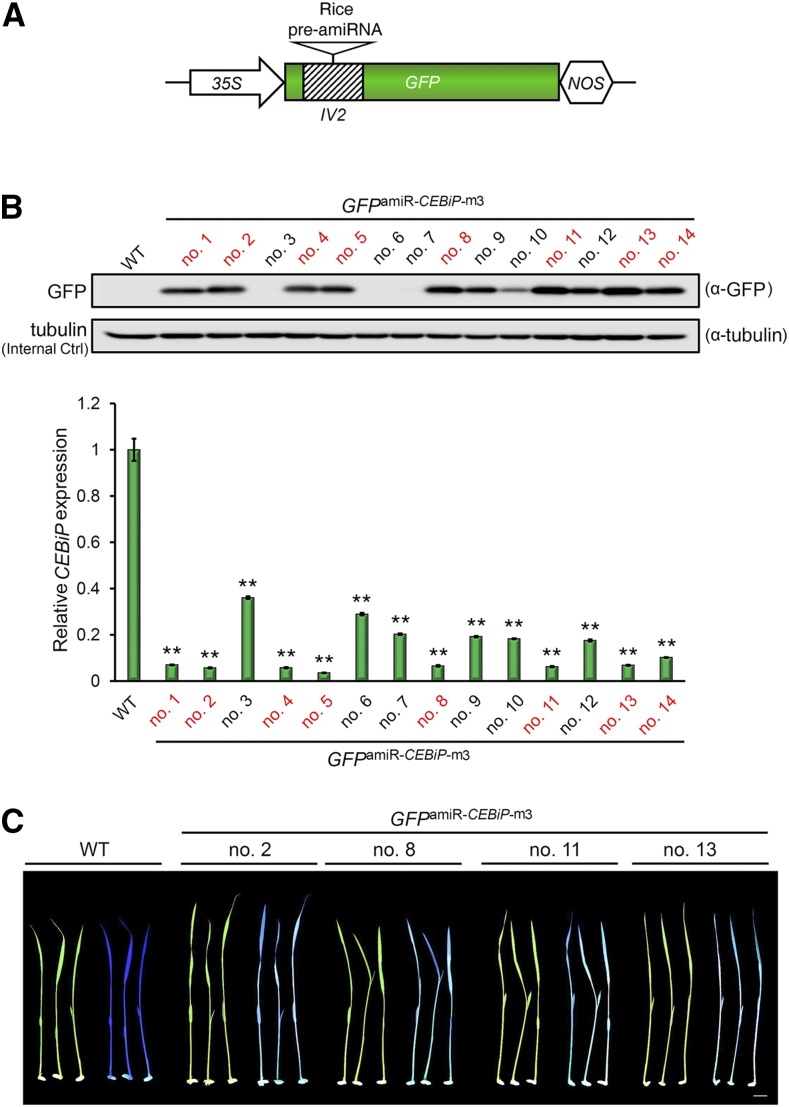Figure 7.
Facilitating the transgenic screen of rice plants with optimal silencing by an intronic amiRNA-producing fluorescent reporter. A, Schematic diagram of an intronic amiRNA-producing GFP reporter for rice. B, An intronic amiR-CEBiP-producing GFP reporter (GFPamiR-CEBiP-m3) facilitates the identification of transgenic rice plants with optimal CEBiP silencing. Eight GFP-positive lines with optimal CEBiP silencing are highlighted in red. GFP abundances and CEBiP transcript levels were determined by immunoblotting and RT-quantitative PCR (qPCR), respectively. The CEBiP transcript level in wild-type (WT) rice plants was arbitrarily set as 1. RT-qPCR data are shown as means ± sd (n = 3). **, P < 0.01 (Student’s t test). C, Representative transgenic rice lines with optimal CEBiP silencing show a cyan color when irradiated by a blue light flashlight in the dark, whereas wild-type rice plants show a dark blue color. Bar = 1 cm.

